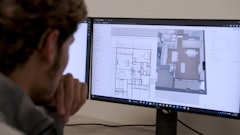
The Design-Build Institute of America (DBIA), the only organization that defines, teaches and promotes best practices in design-build, has announced the release of Design-Build Done Right Best Practices, “Universally Applicable Best Practices Applying to Any Project Type, in Any Market Sector, of Any Size.” Based on research, case studies and extensive industry input for more than a year, DBIA has identified the design-build best practices and implementing techniques that directly impact project performance.
“The 10 Design-Build Done Right Best Practices serve as a single source that clearly defines design-build fundamentals to significantly enhance superior project outcomes,” says Lisa Washington, CAE, Executive Director/CEO, DBIA. “With design-build currently at 40% of all non-residential design and construction, the impetus for owners to engage in Design-Build Done Right is at an all-time high. By applying these ten DBIA Best Practices, owners and practitioners will unlock the inherent value of design-build project delivery.”
Advancing “Design-Build Done Right”
Best practices supporting effective design-build start during the owner’s procurement decision-making process and span through project execution. Each DBIA Best Practice is supplemented by several techniques that provide guidance on specific ways to implement the best practice. The combination of best practices and implementing techniques are the basis for Design-Build Done Right.
“We believe that any sustainable goal should be thought about at the beginning of a project,” stresses Washington. “From an owner perspective, this gives everyone a fair chance to assess the project’s needs and goals. At the same time, the industry has an obligation to understand the importance of sustainability.”
Design-Build Done Right requires more than a good contract and appropriate risk allocation. Everyone from the owner to the subcontractors must understand the process, the expectations and fully engage in the collaboration. DBIA categorizes the 10 best practices (and nearly 50 supporting implementing techniques) into three areas:
- Procuring Design-Build Services: Three best practices address an owner’s choices of project delivery system and procurement approach are among the first decisions an owner makes on a project. An owner should conduct a proactive and objective assessment of the unique characteristics of its program/project and its organization before deciding to use design-build. A procurement plan should then be implemented that enhances collaboration and other benefits of design-build and is in harmony with the reasons that the owner chose the design-build delivery system.
- Contracting for Design-Build Services: Three best practices expound upon the use of fair and clear contracts as fundamental to any delivery process. Contracts used on design-build projects should be balanced and promote the collaborative aspects inherent in the design-build process. The owner and design-builder should address the unique aspects of the design-build process, including expected standards of care for design services.
- Executing the Delivery of Design-Build Projects: Four best practices highlight the need for all design-build team members to be specifically educated and trained in the design-build process, and be knowledgeable of the differences between design-build and other delivery systems. The project team, at the outset of the project, should establish processes to facilitate timely and effective communication, collaboration, and issue resolution. Focus on the design management and commissioning/turnover processes and alignment among the team as to how to execute these processes is also critical.
Market Sector Differences
DBIA recognizes that there are real-world differences among design-build market sectors (water/wastewater, transportation, federal projects), and that specific implementation techniques might differ slightly from one market sector to another. For this reason, DBIA is in the process of working with market sector experts on sector-specific documents to supplement the overall best practices released today. These will provide more detailed guidance on how to put these best practices and implementing techniques into use in different design-build market sectors.
DBIA intends to continually update its portfolio of publications, tools and other resources so that design-build stakeholders will have access to leading-edge information that will allow them to achieve Design-Build Done Right in accordance with the concepts expressed in this document.



![Img 1707[56]](https://img.forconstructionpros.com/files/base/acbm/fcp/image/2023/04/IMG_1707_56_.6437076c97961.png?auto=format%2Ccompress&fit=crop&h=191&q=70&rect=0%2C462%2C1920%2C1080&w=340)











![Glp Porsche 072723 465 64ee42287c29e[1]](https://img.forconstructionpros.com/files/base/acbm/fcp/image/2024/03/GLP_PORSCHE_072723_465.64ee42287c29e_1_.65e88b8589b9c.png?auto=format%2Ccompress&fit=crop&h=135&q=70&rect=0%2C520%2C2250%2C1266&w=240)












